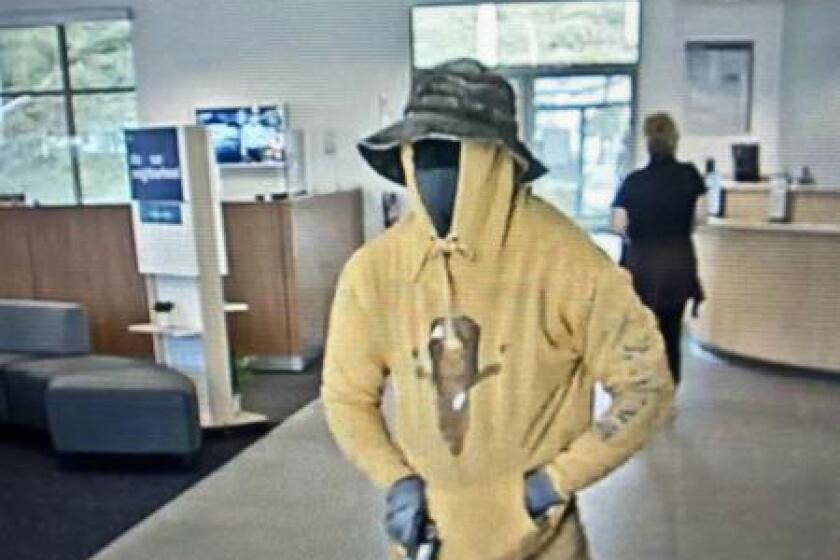Who Would Shoot a Doctor?
Waiting is a principal occupation for patients at the L.A. County-USC Medical Center. They wait to fill out forms. They wait to see nurses. They wait to see doctors. They wait to pick up pills. They wait to arrange for payment. They wait for a bus to go home, if they have a home. If they don’t have a home, they wait for the guards to look away so that they can sneak into some warm corner and steal a few hours of sleep.
Everyday, thousands of poor people come from all over to the sprawling East L.A. medical center; often they have no other option. Most hospitals have devised clever ways to turn away the destitute. County-USC, as the public hospital of last resort, must treat whoever shows up at its doors. While patient caseloads increase, however, budgets do not, and the result is inevitable: waiting.
The doctors and nurses are not blind to the discomfort this causes. From time to time, they’ll devise some makeshift strategy to speed things along. Three years ago, for example, it was decided to station a few doctors in the walk-in emergency room, an especially busy entry point for medical center clientele. The idea was to let these doctors sift quickly through the assembled, deciding who must be seen at once, who could afford to wait a while, and who might be treated on the spot and sent away.
Dr. Richard May, a 47-year-old father of four who had spent his career in public medicine, was assigned to this new triage unit. He was a doctor who could trust his medical experience rather than wait for lab tests. “He found his niche,” said his supervisor and longtime friend, Dr. Harvey Fagelson. “He was superb.”
While wait times were cut in half, not everyone was perfectly comfortable with the physical layout of the new operation. Not all of the patients who go to County-USC are pillars of patience. More than a few aren’t sober. Some are mad about something. Many are plain crazy. The triage doctors knew they were exposed.
“Harvey,” May told Fagelson, “someday someone is going to come in here with a gun and shoot everybody.”
Someday turned out to be Monday. Someone turned out to be a disgruntled patient with three guns hidden under his camouflage coat. He didn’t shoot everybody. “I want doctors, not nurses,” he was heard to shout. And one of the doctors was Richard May.
*
For anyone interested in medicine, the four-hospital medical center is both a vast professional wonderland and a little piece of hell. Every kind of medical case imaginable surfaces at the center. At the same time, the tempo is relentless and the work conditions can be close to desperate. “A good day,” an emergency room nurse explained to me once, “is when all the patients get taken care of and don’t have to wait a long time, and no one hits me or kicks me.”
Some people who work at County-USC burn out quickly on the madness. Those who don’t, those who learn to cope with the bad conditions, become attached to the place in a way that never leaves them. These doctors and nurses tend to be among the few advocates left for the county’s disenfranchised, for the people who tend not to have homes, or documents, or health plans. For people like Walter Fields.
A 57-year-old homeless man, Fields had arrived Monday morning for heart pills and a checkup. He was there, waiting to see May or one of his colleagues, when the shooting started. “It was like this,” Fields said, holding his finger like a pistol. “Boom-boom. Boom. Boom-boom.” He didn’t know the doctors by name, but they were not strangers either. “They had worked on me before,” he said. “They was pretty good doctors. They were helping people. Boom-boom. Boom. Boom-Boom. . . .
“Why would anyone shoot a doctor?”
*
Five hours would pass before the gunman released his two hostages and surrendered. Damacio Ybarra Torres, it would be reported later, had gone to the medical center Monday with a complaint about his care. He told police negotiators he was in no hurry to give up: He wanted to let them know how it felt to wait.
The standoff provided time to wander the grounds. Trauma cases were being directed elsewhere, and one floor was evacuated. Beyond that, business went on pretty much as usual at the medical center. In the Pediatrics Pavilion, worried parents waited with sick children, some crying, others all too quiet. In Women’s Hospital, mothers-to-be rushed through admitting forms.
While the work went on, there were wary, angry eyes among the staff. A certain weariness infected the hallways. I have no doubt many people were asking Walter Fields’ question: Why would anyone shoot a doctor? Or maybe they already were on to the next: Can anything be done to keep it from happening again? Will anything be done?
More to Read
Sign up for Essential California
The most important California stories and recommendations in your inbox every morning.
You may occasionally receive promotional content from the Los Angeles Times.











